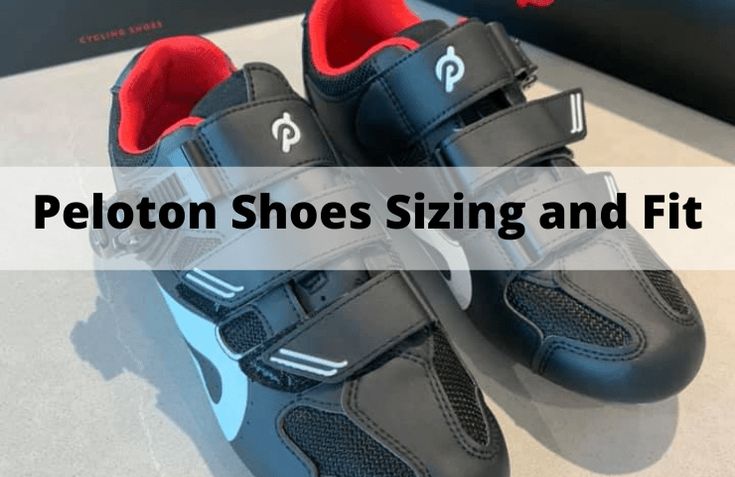In the world of indoor cycling, Peloton bikes have carved out a niche, offering a blend of convenience and high-intensity workout from the comfort of your home. A super important element of this experience hinges on the right gear, particularly the shoes. A common query among enthusiasts and potential users alike is: are Peloton shoes true to size? Ill-fitting shoes are more than just a discomfort; they can significantly impair your performance and enjoyment. This detailed guide aims to explore Peloton shoe sizing, shedding light on their fit and addressing the prevalent sizing queries.
1. Understanding Peloton Shoe Sizing
Peloton shoes embrace the European sizing standard, a departure from the familiar US sizing. This disparity often leads to confusion and sizing mishaps. The key lies in accurately translating your US size into its European counterpart. Peloton’s official website is equipped with a user-friendly size chart to facilitate this conversion. However, the question remains: do these sizes translate directly in terms of fit? Users report varied experiences, with some finding a perfect match while others suggest slight deviations. This discrepancy underlines the importance of understanding not just your size, but the nuances of Peloton’s sizing philosophy.
2. General Fit of Peloton Shoes
Peloton shoes are crafted with a snug fit philosophy, aiming to offer a secure grip during your ride. The general trend leans towards a narrow to normal width, catering primarily to feet that align with or are slightly narrower than standard measurements. Those with wider feet might find the fit a bit too snug, particularly around the toe box area. This specific design decision by Peloton underscores the need for potential buyers to consider their foot width seriously. It’s not just about the size but also about how the shoe accommodates the unique contours of your feet.
3. Factors Influencing Peloton Shoe Fit
The journey to finding your perfect Peloton shoe size is influenced by several factors:
- Foot Width: The width of your foot is a decisive factor. Those with broader feet might need to size up to avoid a constrictive feel.
- Arch Type: Your arch type plays a significant role. High arches demand additional support, whereas lower arches may fare better with a snugger fit.
- Personal Preference: Fitness goals and comfort preferences vary. Some users prefer a looser fit for more relaxed rides, while others seek a tighter fit for intensive workouts.
Understanding these factors is super important in making an informed decision. It’s not just about the numerical size; it’s about how the shoe complements your foot’s unique characteristics.
4. Sizing Recommendations for Peloton Shoes
Navigating the sizing of Peloton shoes can be simplified with these general guidelines:
- Standard or Slightly Narrower Feet: Stick to your usual size. Peloton shoes are designed with your foot type in mind, offering a snug, supportive fit.
- Wider Feet: Consider upsizing by half a size. This adjustment can make a significant difference in comfort, especially during longer sessions.
- In-between Sizes: It’s advisable to choose the larger size. A slightly roomier shoe is preferable to a tight, restrictive one, as it allows for natural foot expansion during workouts.
These recommendations aim to demystify the process, helping you make a choice that marries comfort with performance.
5. Tips for Ensuring a Proper Fit
To secure the ideal fit for your Peloton shoes, consider these tips:
- Try Before You Buy: If possible, visit a store to try on Peloton shoes. This firsthand experience is invaluable in gauging the right fit.
- Sock Selection: The type of socks worn during cycling can influence the fit. Ensure you try on the shoes with cycling-specific socks for an accurate feel.
- Toe Room: Ensure there’s a slight space in the toe box. Your toes shouldn’t touch the front of the shoe when pedaling.
- Strap Adjustment: The straps should be tight enough to secure your foot but not so tight as to cause discomfort. A well-adjusted strap can really improve the shoe’s fit.
These tips are designed to guide you towards a comfortable and efficient Peloton experience.
6. Addressing Common Sizing Concerns
Here’s how to tackle some frequent sizing issues:
- Too Tight: If the shoe feels constrictive, sizing up half a size or opting for a wider option can provide relief.
- Too Loose: Thicker socks or tighter strap adjustments can help. Ensuring the right size in the first place is key.
- Heel Slippage: If your heel tends to slip, tighten the heel strap and check for proper alignment.
Remember, comfort is paramount. Don’t hesitate to experiment with sizes to find what works best for you.
Conclusion
Peloton shoes, designed for the avid indoor cyclist, generally stay true to size for those with standard or slightly narrower feet. However, it’s the nuances – foot width, arch type, and personal preference – that dictate the perfect fit. Embrace these guidelines and tips to ensure a supportive and comfortable Peloton journey. Remember, the right shoe is a super important component in transforming your cycling experience from good to great.
For more insights and cycling gear, visit our homepage at Refried Cycles.









